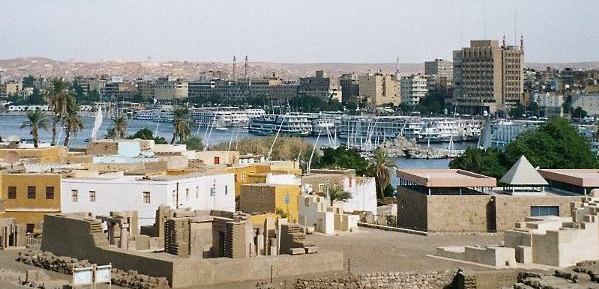An archaeological team from Sweden has discovered a dozen burial sites near the southern city of Aswan, Egypt that date back nearly 3,500 years to the New Kingdom era of ancient Egypt.
Human remains, as well as animal remains were unearthed in the graveyards, which were discovered in the Gabal al-Silsila or Chain of Mountains area, 40.3 miles north of Aswan. The former inhabitants of this area probably lived during the reigns of Pharaohs Amenhotep II and Thutmose III.

Egypt looks forward that the burial sites will aid historians in a better understanding of the ancient Egyptian health care system and provide a shot in the arm for Egypt’s struggling tourism industry, which has been plagued by political mayhem and militant attacks since the toppling of the autocrat Hosni Mubarak’s government in 2011.
Some of the grave sites were for animals and included one or two chambers with either stone or clay coffins or some made of cartonnage. Amulets and scorpions were also found.
The expedition is from Sweden’s Lund University and began their digging in 2012. In 2015, the team unearthed the remains of an ancient temple in close proximity to this archaeological site in Gabal al-Silsila.
Initial inspections uncovered several complete bodies as well as proof of undernourishment and broken bones resulting from heavy labor.
The archaeological information generated from the newly discovered tomb and burial sites have revealed a treasure trove of material culture, including sculptured and sometimes painted ceramic coffins, painted cartonnage, textile and organic wrapping, finely robed sandstone sarcophagi, vessels and plates made of pottery, as well as an array of amulets and jewelry.
So far, the early research on the vast amount of human remains recovered from the graveyard indicates mostly healthy individuals. At this time, there is some evidence of malnutrition and infection. Fractures of some bones and increased muscle attachments amongst the skeletal remains indicate behavioral vulnerabilities related to occupational dangers and a particularly labor intensive environment. Also, many of the injuries seemed to be in an advanced phase of healing, which suggested adequate medical care.

These new finds add thrilling new components to the cemeteries, changing yet again the perceived purpose and obvious appearance of the site of Gabal al-Silsila. With additional fieldwork, the team looks forward to enhancing their understanding of the overall purpose and role of this area during the New Kingdom, Reuters reported.
Here is another story from us: The Black Sea’s 40+ shipwrecks discovered during survey of her seabed
Additional research is expected to reveal the social rankings of those buried there and what for which exact purpose did the unearthed cemeteries serve.
